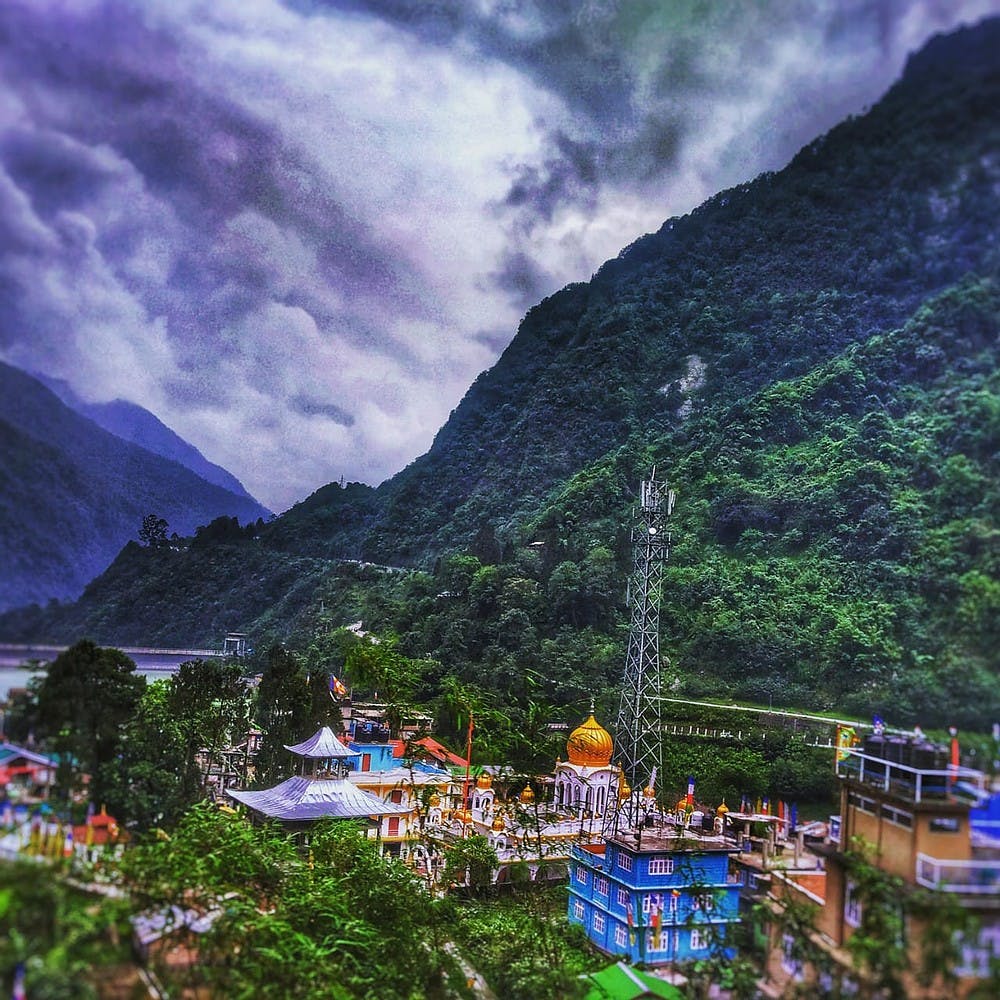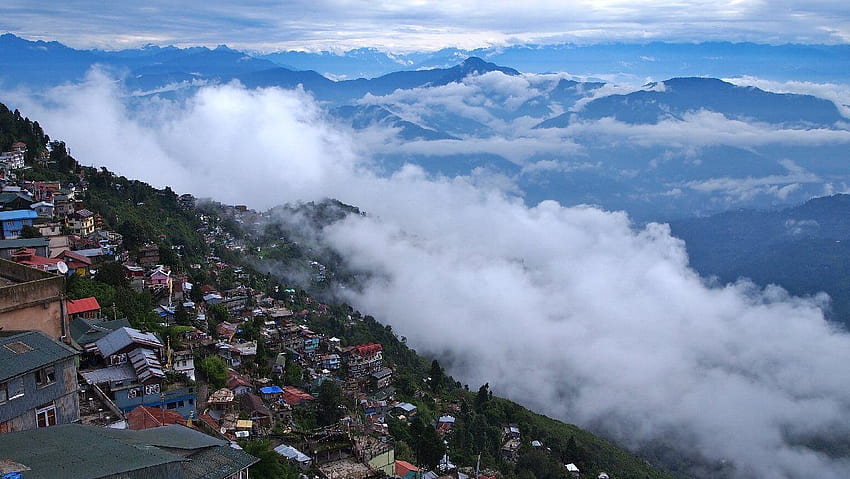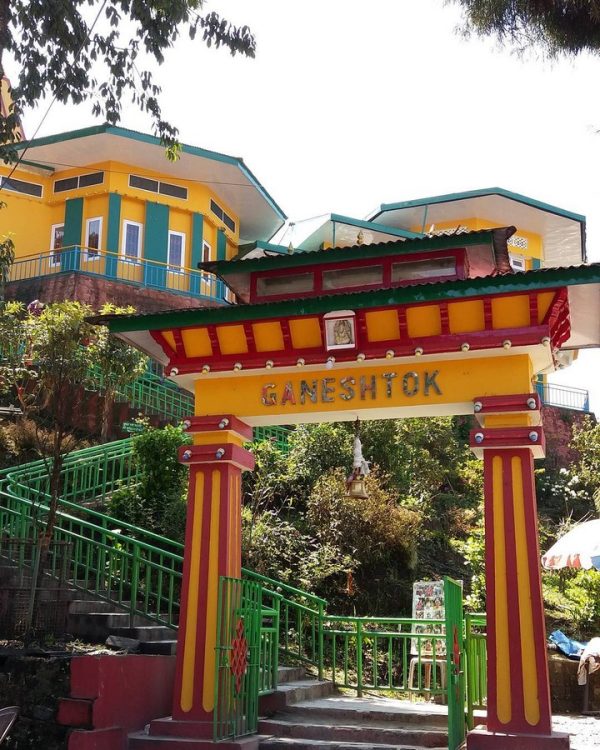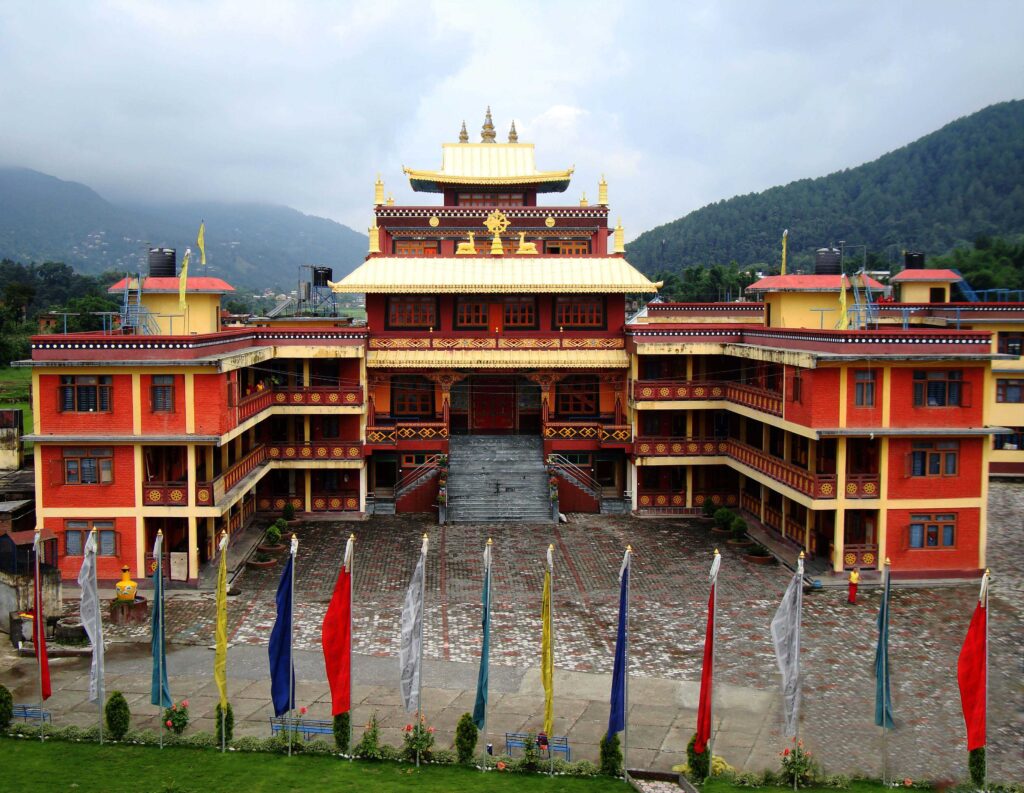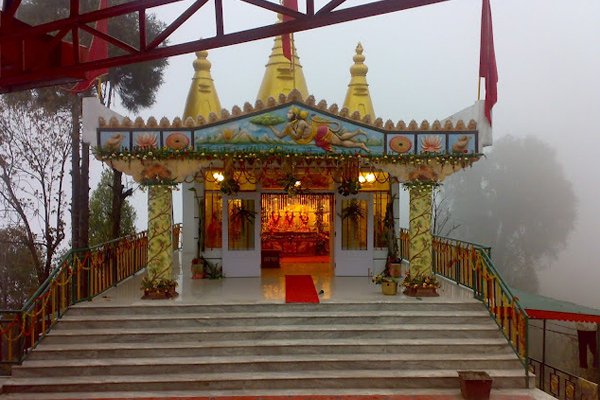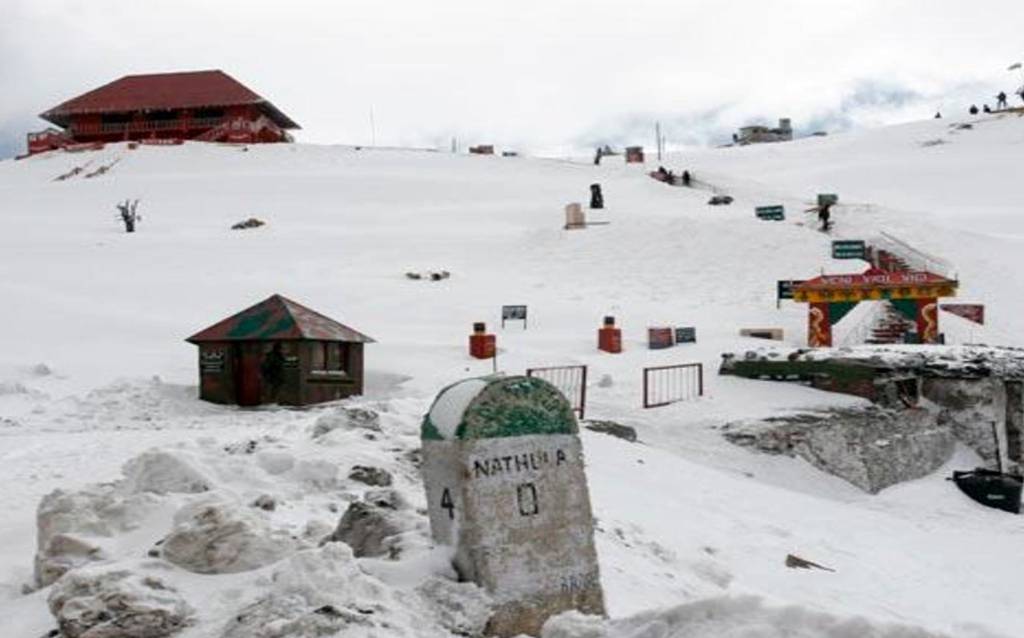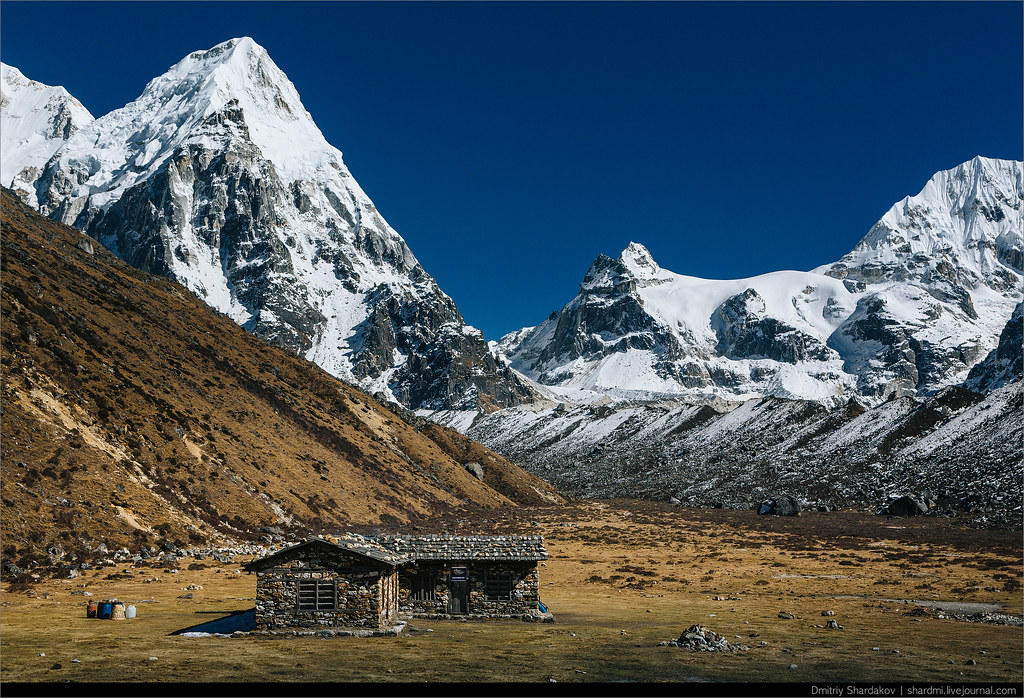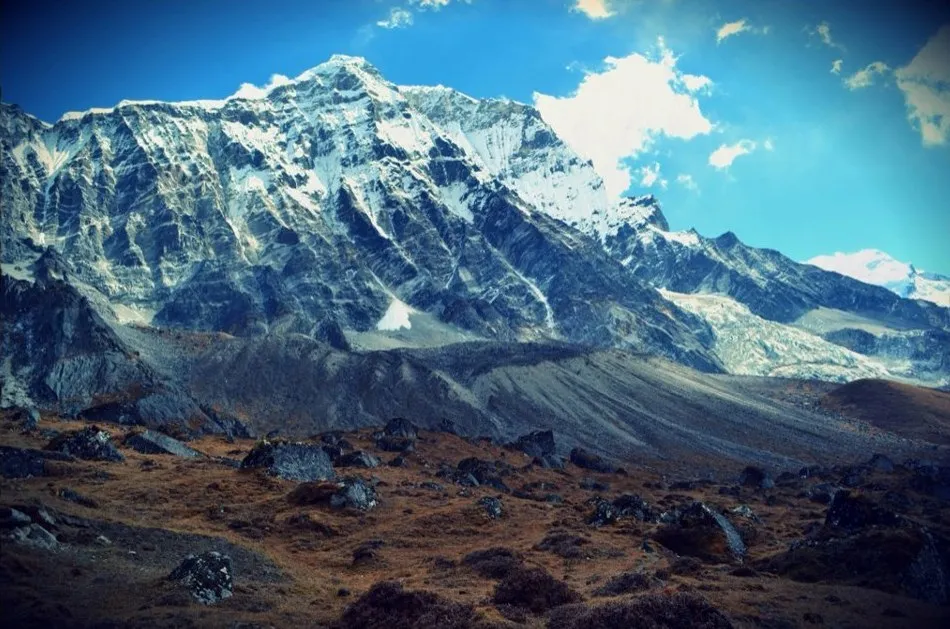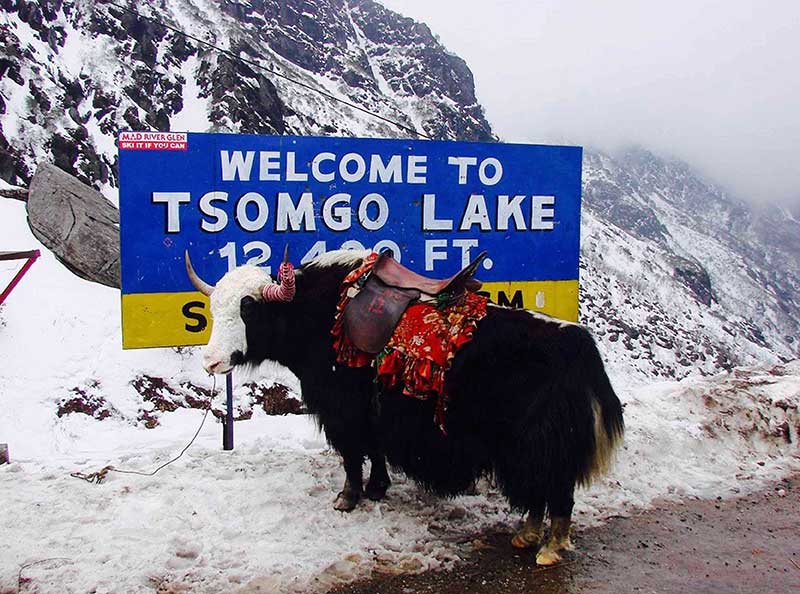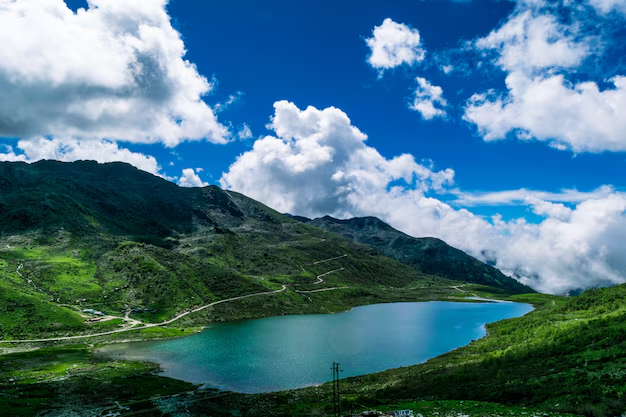“Explore East Sikkim with Your Tours & Travels”
Places to visit in East Sikkim offer a breathtaking journey through pristine landscapes and vibrant cultures. With Your Tours & Travels, embark on an adventure to explore this enchanting region. Begin your expedition at the iconic Tsomgo Lake, where crystal-clear waters mirror the surrounding snow-capped peaks. Traverse through the quaint town of Gangtok, adorned with colorful monasteries and bustling markets. Delve into the rich history of the region at Rumtek Monastery, a serene sanctuary nestled amidst lush hills. Witness the majestic beauty of Nathula Pass, a historic mountain pass on the Indo-China border. End your expedition with a visit to the tranquil hamlet of Zuluk, where winding roads offer panoramic views of the Himalayas. Let Your Tours & Travels be your guide to uncover the hidden treasures of East Sikkim.
Quick info about East Sikkim
| Area | 954 sq kms |
|---|---|
| Coordinates | 27.3314° N 88.6140° E |
| Language | Hindi, Nepali, Bhutia, Limbu and Lepcha |
| Popular Treks in East Sikkim | Goecha La Trek, Dzongri Trek |
| Popular Places to Visit in East Sikkim | Gangtok, Rumtek Monastery, Ganesh Tok, Nathula Pass, Hanuman Tok |
| Best Time to Visit East Sikkim | Spring (March to May) Autumn (September to November) |
| Popular Lakes in East Sikkim | Tsomgo Lake (Changu Lake), Kupup Lake |
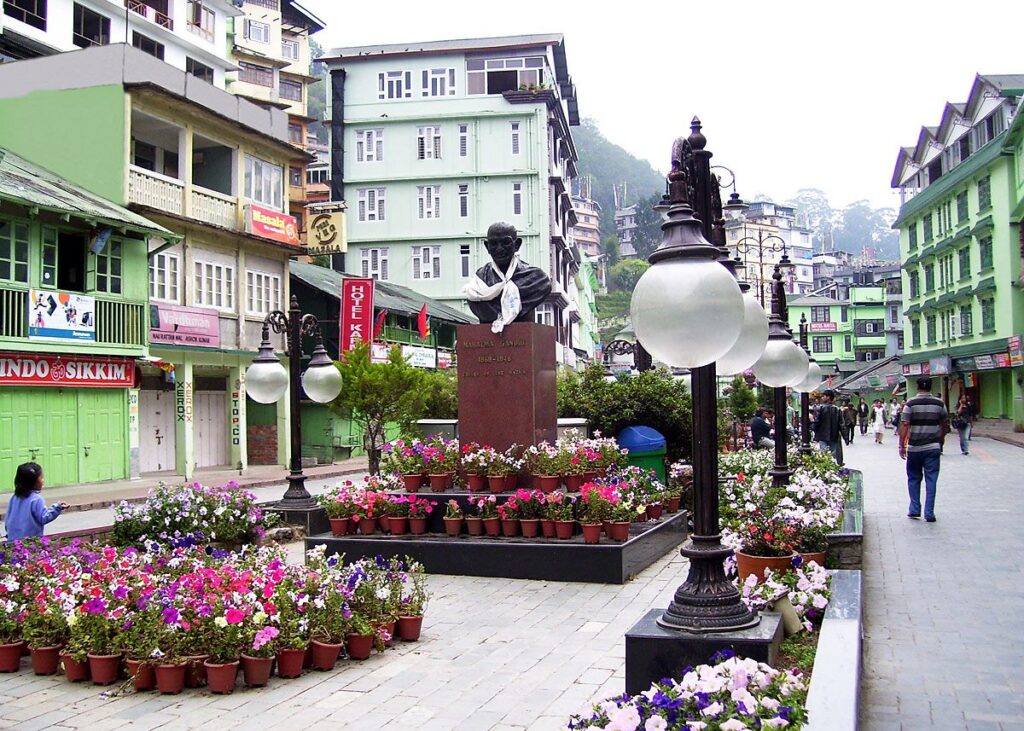
PLACES TO VISIT IN EAST SIKKIM
East Sikkim tourist spots offer a captivating blend of natural beauty and cultural richness. Begin your exploration in the capital city of Gangtok, where you can visit the iconic Rumtek Monastery, a revered Buddhist site, and witness panoramic views from Ganesh Tok and Tashi Viewpoint. Dive into the region’s history at the Namgyal Institute of Tibetology and Enchey Monastery, showcasing intricate architecture and ancient artifacts. For nature enthusiasts, the serene beauty of Tsomgo Lake and the lush landscapes of Banjhakri Falls are must-visit destinations. Embark on a scenic drive to Nathula Pass, where you can glimpse into the Indo-China border and soak in the majestic Himalayan vistas. East Sikkim promises an unforgettable journey filled with cultural insights and breathtaking landscapes.
1. GANGTOK -
Nestled amidst the majestic Himalayas, Gangtok, the capital of Sikkim, is a vibrant tapestry of culture and nature. With its winding streets adorned with colorful prayer flags fluttering in the breeze, Gangtok offers a unique blend of tradition and modernity. From the bustling markets brimming with local crafts to the tranquil monasteries perched on verdant hillsides, every corner of Gangtok tells a story of resilience and spirituality.
Visitors can savor the flavors of Sikkimese cuisine at quaint cafes or embark on adventures to nearby attractions like Rumtek Monastery and Tsomgo Lake. As the sun sets behind the snow-capped peaks, Gangtok transforms into a spectacle of twinkling lights, inviting travelers to immerse themselves in its warmth and charm.
2. GANESH TOK -
Perched atop a hill overlooking Gangtok, Ganesh Tok offers a mesmerizing vista of the cityscape against the backdrop of majestic mountains. As visitors ascend the winding path lined with prayer flags, a sense of serenity envelops them, accentuated by the gentle rustle of leaves and the distant chants from nearby monasteries. At the summit, a quaint temple dedicated to Lord Ganesh welcomes pilgrims and travelers alike, offering a tranquil space for reflection and prayer.
From this vantage point, one can marvel at the panoramic views stretching to the horizon, where the sky meets the earth in a breathtaking display of nature’s grandeur. With its serene ambiance and stunning vistas, Ganesh Tok beckons visitors to immerse themselves in the beauty of Sikkim’s landscape and spirituality.
3. RUMTEK MONASTERY -
Nestled in the serene hills of Sikkim, Rumtek Monastery stands as a beacon of Buddhist spirituality and architectural splendor. The monastery, adorned with vibrant murals and intricate carvings, exudes an aura of peace and devotion. As one enters its sacred halls, the melodious chants of monks reverberate through the air, transporting visitors to a realm of tranquility.
Surrounded by lush greenery and panoramic views, Rumtek Monastery offers a sanctuary for both spiritual seekers and admirers of art and culture. With its rich history and profound significance in Tibetan Buddhism, a visit to Rumtek Monastery is a journey of enlightenment and introspection, leaving an indelible mark on the soul.
4. HANUMAN TOK -
Hanuman Tok, nestled atop a verdant hill in Gangtok, offers a serene retreat amidst nature’s embrace. As visitors ascend the winding path, they are greeted by the tranquil ambiance and panoramic views of the surrounding valleys. The temple dedicated to Lord Hanuman exudes an aura of spirituality, drawing devotees and travelers alike to seek blessings and solace.
From the elevated vantage point, one can witness the sun casting its golden hues over the distant mountains, creating a spectacle of unparalleled beauty. Surrounded by lush greenery and the melodious chirping of birds, Hanuman Tok provides a sanctuary for introspection and contemplation. With every visit, one can’t help but feel a sense of peace and serenity, making it a cherished destination in the heart of Sikkim.
5. NATHULA PASS -
Nathula Pass, a historic mountain pass in the Himalayas, stands as a gateway between India and China, offering travelers a glimpse into both countries’ rich cultural heritage. As you traverse the winding roads, flanked by rugged peaks and pristine valleys, the air becomes tinged with anticipation and excitement. At an altitude of over 4,300 meters, the pass commands panoramic views of snow-clad mountains and vast expanses of wilderness.
Visitors can explore the border trade market bustling with activity, where goods from both nations exchange hands, fostering a spirit of camaraderie amidst geopolitical tensions. As the fluttering flags symbolize unity in diversity, Nathula Pass embodies the enduring bonds that transcend boundaries and connect hearts across the Himalayas.
Popular Treks in East SIKKIM
1. Goecha La Trek -
Embarking on the Goecha La Trek is like stepping into a realm of pure adventure and natural wonder. As you traverse through rugged terrain and dense forests, each step brings you closer to the breathtaking vistas of the Himalayas. The trail unfolds like a story, revealing hidden alpine lakes, cascading waterfalls, and towering peaks cloaked in mist.
With every ascent, anticipation builds for the awe-inspiring moment when you reach the Goecha La Pass, standing at the threshold of towering giants like Kanchenjunga. Amidst the solitude of the mountains, one finds solace and a profound connection to nature’s grandeur. This trek is not merely a physical journey but a spiritual odyssey that leaves an indelible mark on the soul.
2. Dzongri Trek -
Embark on the awe-inspiring Dzongri Trek, a journey through the heart of the Himalayas that promises breathtaking vistas and unforgettable experiences. As you ascend through lush forests and alpine meadows, each step unveils a new panorama of snow-capped peaks and pristine valleys. The trail, dotted with colorful rhododendrons and fluttering prayer flags, leads to the picturesque Dzongri plateau, where trekkers can witness the sunrise casting a golden glow over the towering mountains.
Amidst the tranquility of the high-altitude camp, surrounded by nature’s grandeur, one can’t help but feel a profound sense of peace and wonder. With every moment etched in memory, the Dzongri Trek is a testament to the beauty and majesty of the Himalayan wilderness.
Popular Lakes in East SIKKIM
1. Tsomgo Lake -
Nestled amidst the rugged terrain of East Sikkim, Tsomgo Lake, also known as Changu Lake, is a shimmering jewel reflecting the beauty of the Himalayas. Surrounded by towering peaks and lush greenery, this sacred lake holds deep significance in local folklore and religious beliefs. Visitors can marvel at the crystal-clear waters mirroring the azure sky, while colorful prayer flags flutter in the gentle mountain breeze.
Tsomgo Lake’s tranquil ambiance provides the perfect setting for quiet contemplation and introspection. Adventure seekers can also indulge in activities like yak rides or simply soak in the breathtaking vistas that unfold at every turn. As the sun sets behind the mountains, casting a golden hue upon the tranquil waters, Tsomgo Lake enchants travelers with its ethereal beauty, leaving an indelible impression on their hearts.
2. Kupup Lake -
In the heart of East Sikkim, Kupup Lake is a mesmerizing jewel of nature’s creation. Encircled by rugged mountains and lush greenery, this alpine lake captivates visitors with its serene ambiance and crystal-clear waters. As the sun casts its golden rays upon the tranquil surface, Kupup Lake becomes a haven for photographers and nature enthusiasts alike, offering breathtaking views at every turn.
Surrounded by quaint villages and verdant meadows, the lake serves as a tranquil retreat for those seeking solace amidst the pristine beauty of the Himalayas. With its untouched charm and pristine surroundings, Kupup Lake beckons travelers to embark on a journey of exploration and discovery in the lap of nature.
East Sikkim Tour Packages are available at Your Tours & Travel.
Questions related to Sikkim
- Which is cheaper Darjeeling or Gangtok?
- Accommodation: Both Darjeeling and Gangtok offer a range of accommodation options, from budget guesthouses to luxury hotels. The prices can vary significantly depending on the type of accommodation and its location within the city. Generally, Gangtok may have slightly lower accommodation costs compared to Darjeeling, but this can vary based on factors such as the time of year and specific accommodations.
- Food: Food prices can also vary, but in general, eating out at local restaurants and street food stalls is relatively affordable in both Darjeeling and Gangtok. However, dining at upscale or touristy restaurants can be more expensive.
- Transportation: The cost of transportation between Darjeeling and Gangtok can vary depending on the mode of transport you choose. Shared taxis and buses are common ways to travel between the two cities, and they are usually reasonably priced. However, if you opt for private transportation or hire a car, it will be more expensive.
- Sightseeing and Activities: The cost of sightseeing and activities will depend on your interests and the specific places you want to visit. Both cities offer various attractions, some of which may require entrance fees. Activities like trekking or guided tours will also have their own costs.
- Shopping: Darjeeling and Gangtok are known for their local handicrafts and souvenirs. Prices for these items can vary widely based on their quality and where you purchase them. Bargaining is common in local markets, so you may be able to get better deals with some negotiation skills.
- How to plan Sikkim Darjeeling tour?
- Set a Budget:
- Determine how much you're willing to spend on your trip. This will help you make choices regarding accommodations, transportation, and activities.
- Decide on the Duration:
- Decide how many days you want to spend in Sikkim and Darjeeling. A typical itinerary is around 7-10 days, but you can adjust based on your preferences.
- Research and Create an Itinerary:
- Research the places you want to visit in Sikkim and Darjeeling. Common attractions include Gangtok, Pelling, Tsomgo Lake, Nathula Pass, Darjeeling, and Tiger Hill.
- Create a rough itinerary, allocating days to each location and activity. Make sure to include travel time between destinations.
- Plan the Best Time to Visit:
- Consider the weather when planning your trip. The best time to visit is typically from March to June and from September to November when the weather is pleasant.
- Book Flights and Accommodations:
- Book your flights to Bagdogra Airport (IXB) or nearest airport, depending on your point of entry.
- Reserve accommodations in advance, especially during the peak tourist season. Choose hotels, guesthouses, or homestays that fit your budget and preferences.
- Arrange Transportation:
- Decide on how you will travel between destinations. Options include hiring a private cab, using public buses, or renting a car.
- Consider hiring a local guide for certain activities or treks to make the most of your experience.
- Obtain Necessary Permits:
- Check if you need permits for specific areas, such as Nathula Pass. These permits can be obtained through the local tourism department or your travel agency.
- Pack Accordingly:
- Pack clothing suitable for the weather during your visit. Layers are advisable due to temperature variations.
- Don't forget essential items like comfortable walking shoes, medications, and necessary documents.
- Plan Activities and Tours:
- Research and book activities and tours in advance, such as trekking, river rafting, or tea estate visits.
- Check for any cultural festivals or events happening during your visit that you might want to attend.
- Learn About Local Culture:
- Familiarize yourself with the local customs, traditions, and etiquette to show respect to the local people.
- Be Flexible:
- Be prepared for changes in plans due to unforeseen circumstances like weather conditions. Have a backup plan for such situations.
- Stay Informed About COVID-19 Guidelines:
- Keep track of any travel restrictions, health protocols, and safety guidelines related to COVID-19 that may apply during your visit.
- Travel Insurance:
- Consider purchasing travel insurance to cover unexpected emergencies or trip cancellations.
- Enjoy Your Trip:
- Finally, relax, enjoy the breathtaking scenery, and immerse yourself in the culture and beauty of Sikkim and Darjeeling.
- Set a Budget:
- Sikkim and Gangtok same?Sikkim and Gangtok are not the same, but they are closely related. Sikkim is a state in northeastern India, while Gangtok is the capital and largest town of Sikkim. Here's a bit more detail about each:
- Sikkim:
- Sikkim is a state located in the northeastern part of India, nestled in the eastern Himalayas.
- It is known for its stunning natural beauty, including lush green valleys, snow-capped peaks, pristine lakes, and dense forests.
- Sikkim is one of the smallest states in India by land area but is rich in biodiversity and cultural diversity.
- The state offers a wide range of attractions and activities, including trekking, mountaineering, wildlife viewing, and visits to monasteries and historical sites.
- Sikkim shares its borders with Tibet (China) to the north, Bhutan to the east, Nepal to the west, and the Indian state of West Bengal to the south.
- Gangtok:
- Gangtok is the capital and largest town in Sikkim.
- It serves as the political, cultural, and economic center of the state.
- Gangtok is situated in the eastern part of Sikkim and is known for its scenic beauty and pleasant climate.
- The town is surrounded by the Himalayan ranges and offers breathtaking views of the mountains.
- Gangtok is a popular tourist destination and serves as a gateway for travelers exploring various parts of Sikkim.
- It has a mix of modern amenities and traditional charm, with attractions like monasteries, markets, and viewpoints.
- Sikkim:
- How many days required to visit Gangtok?The number of days required to visit Gangtok can vary depending on your interests, the specific places you want to explore in and around Gangtok, and your travel pace. However, a typical itinerary for Gangtok usually ranges from 2 to 4 days. Here's a general guideline for how you can plan your time in Gangtok:
- 2 Days in Gangtok:
- If you have limited time, you can spend a quick two days in Gangtok to see some of its major attractions. This would involve a somewhat rushed schedule but can give you a taste of the town.
- Day 1: Explore the city center, visit attractions like MG Marg (the main market), Enchey Monastery, and Hanuman Tok.
- Day 2: Take a day trip to the nearby attractions, such as Rumtek Monastery, Banjhakri Falls, and the Namgyal Institute of Tibetology.
- 3 Days in Gangtok:
- Spending three days in Gangtok allows for a more relaxed experience, and you can explore additional places.
- Day 1 and Day 2: Follow the itinerary for a 2-day trip, as mentioned above.
- Day 3: Visit the Tsomgo Lake and Baba Mandir (if they are open to tourists; permits are required), or you can explore more of Gangtok's local culture and cuisine.
- 4 Days or More:
- With four or more days in Gangtok, you can explore the town at a leisurely pace and also consider nearby destinations like Nathula Pass and Changu Lake.
- Day 1 and Day 2: Follow the itinerary for a 2-day trip in Gangtok.
- Day 3: Visit Tsomgo Lake and Baba Mandir (if you haven't already) or explore nearby areas like Tashi Viewpoint, Ganesh Tok, or the Flower Exhibition Centre.
- Day 4: Take a day trip to Nathula Pass (if it's open to tourists during your visit; permits are required), which is a high-altitude border pass with China. You can also visit Changu Lake on the way.
- 2 Days in Gangtok:
- What is the best time to visit Sikkim?The best time to visit Sikkim depends on your preferences and the experiences you seek. Sikkim offers different attractions and experiences throughout the year due to its diverse geography and varying climates. Here are the main seasons and their characteristics:
- Spring (March to May):
- Spring is one of the most popular times to visit Sikkim. The weather is pleasant, and the region's flora comes alive with blooming rhododendrons, orchids, and other flowers.
- This is an ideal time for trekking and outdoor activities. Many trekking routes are accessible, and you can enjoy clear views of the Himalayan peaks.
- Temperatures during spring are comfortable, with daytime temperatures ranging from 15°C to 25°C (59°F to 77°F).
- Summer (June to August):
- Summer in Sikkim is the monsoon season, characterized by heavy rainfall. The region is lush and green during this time, but it can be challenging for outdoor activities due to rain and landslides.
- While some tourists avoid this season, it's a great time for those interested in observing the vibrant landscapes and experiencing the local culture.
- Be prepared for occasional road closures and disruptions in transportation during heavy rains.
- Autumn (September to November):
- Autumn is another excellent time to visit Sikkim. The monsoon rains have subsided, leaving behind clear skies and lush landscapes.
- The weather is cool and comfortable, making it perfect for sightseeing, trekking, and other outdoor activities.
- Autumn is also the harvest season, and you can witness local festivals and cultural events.
- Clear views of the Himalayan peaks can be enjoyed during this season.
- Winter (December to February):
- Winter in Sikkim is cold, with temperatures dropping significantly, especially at higher altitudes. In Gangtok, daytime temperatures may range from 5°C to 15°C (41°F to 59°F).
- This is a great time for travelers who enjoy the charm of snowy landscapes and fewer crowds.
- Many high-altitude areas may be covered in snow, making it ideal for winter sports like skiing in areas like Yumthang Valley.
- Some high-altitude passes like Nathula Pass may be closed due to heavy snowfall.
- Spring (March to May):
- Which is colder Sikkim or Darjeeling?Sikkim, as a state, encompasses various elevations and climates, so the temperature can vary depending on the specific location and time of year. In general, Sikkim has a wide range of temperatures, from subtropical in the lower regions to alpine in the higher areas. Darjeeling, on the other hand, is known for its cooler climate due to its higher elevation. It's a hill station located at an altitude of around 6,700 feet (2,042 meters) above sea level, and its climate is considered more temperate compared to many parts of Sikkim. In terms of general temperature comparisons:
- Darjeeling: Darjeeling tends to be cooler than the lower-altitude areas of Sikkim. Summers in Darjeeling are mild, with daytime temperatures ranging from 15°C to 20°C (59°F to 68°F). Winters are colder, with temperatures dropping to around 2°C to 7°C (36°F to 45°F). It can occasionally experience snowfall during the winter months.
- Sikkim: The temperatures in Sikkim can vary widely based on the elevation. In places like Gangtok (the capital of Sikkim) at a lower elevation, the temperatures are milder and more moderate, similar to Darjeeling. However, in higher-altitude areas of Sikkim, such as Lachung, Lachen, or areas around Nathula Pass, temperatures can be significantly colder, especially during the winter months, often dropping below freezing.
- Does Gangtok have snow?Yes, Gangtok, the capital and largest town of Sikkim, does receive snowfall, but it typically occurs during the winter months. Gangtok is situated at an elevation of approximately 5,410 feet (1,650 meters) above sea level, which means that while it does experience cold weather in the winter, it doesn't receive heavy or prolonged snowfall like higher-altitude areas in Sikkim. Here's what you can expect regarding snowfall in Gangtok:
- Winter Snowfall: Gangtok may experience occasional light snowfall during the winter months, particularly in December, January, and February. However, the snowfall in Gangtok is usually not heavy, and it may not accumulate significantly on the ground.
- Snow-Covered Surroundings: While Gangtok itself may not be covered in deep snow, the surrounding areas at higher elevations, such as Tsomgo Lake (Changu Lake), Nathula Pass, and higher mountain regions, often receive more substantial snowfall and can provide a snowy landscape during the winter.
- Road Closures: When there is snowfall, especially in the higher regions of Sikkim, it can lead to temporary road closures, including the Nathula Pass route, due to safety concerns. It's important to check road conditions and any travel advisories if you plan to visit these areas during the winter.
- Can we cover Sikkim in 4 days?Covering the entire state of Sikkim in just 4 days would be quite challenging and rushed, given the diverse attractions and landscapes it offers. Sikkim is known for its stunning natural beauty, cultural heritage, and various places of interest, so it's best explored at a more leisurely pace to fully appreciate what it has to offer. However, if you have only 4 days and want to see some of the highlights, here's a very basic itinerary you could consider: Day 1: Arrival in Gangtok
- Arrive at Bagdogra Airport or New Jalpaiguri Railway Station and proceed to Gangtok.
- Explore Gangtok's city center, including MG Marg and local markets.
- Visit attractions in and around Gangtok, such as Enchey Monastery, Hanuman Tok, and Tashi Viewpoint.
- Explore local culture and cuisine.
- Take a day trip to Tsomgo Lake (Changu Lake) and Baba Harbhajan Singh Mandir.
- Enjoy the scenic beauty of the lake and surrounding areas.
- Depending on your departure time, you can either explore more of Gangtok or head back to the airport or railway station for your onward journey.
Table of Contents
Toggle

